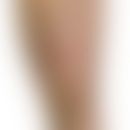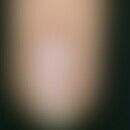DefinitionThis section has been translated automatically.
Rare, non-bullous, autosomal recessive, congenital lamellar ichthyosis causally due to transglutaminase-1 deficiency. S.a.u. Transglutaminases. S.a. Overview chapter: Autosomal recessive congenital ichthyoses.
Occurrence/EpidemiologyThis section has been translated automatically.
The disease is rare with a prevalence of 1,50,000 - 1:60,000.
You might also be interested in
EtiopathogenesisThis section has been translated automatically.
Autosomal recessive mutation of the transglutaminase 1 gene (TGM1 gene; gene locus: 14q11.2), the enzyme for building the cornified cell envelope. A correlation can be established between the clinical severity and the type of mutation. In the group of autosomal recessive congenital ichthyoses, 40% of cases fall into this type of ichthyosis (ARCI 1). 60% involve phenotypes with preserved transglutaminase activity with different mutations (ARCI2-ARCI 12), of which mutations in the ALOXE3, ALOX12, CYP4F22, and NIPL4 genes are the most common.
ManifestationThis section has been translated automatically.
From birth, appearing under the picture of erythroderma (congenital ichthyosiform erythroderma).
ClinicThis section has been translated automatically.
Diffuse, usually very marked, but occasionally more discrete, generalized, brownish-blackish scaling affecting both the scalp and the flexures of the joints. Erythroderma with fine, white, loose scales or discrete erythema beneath overlying scaling may occur. Pronounced, planar or insular palmo-plantar keratoses (see also autosomal dominant lamellar ichthyosis), often associated with painful fissures, digital contractures, onychodystrophy, and subungual hyperkeratoses. Usually loss of eyebrows. Sweat production may be decreased; skin condition may worsen with UV irradiation.
DiagnosisThis section has been translated automatically.
Clinical picture and clinical course! Biochemical detection of transglutaminase deficiency in frozen skin sections (method is outdated); molecular genetic detection of the mutation in the TGM1 gene.
TherapyThis section has been translated automatically.
Moisturizing and mild keratolytic agents such as 5-10% urea and possibly 10% lactic acid. The application of external retinoids relatively often causes irritation. Good results have been described with the external application of acetylcysteine in ointment base R003. S.a.u. ichthyosis vulgaris, autosomal dominant. S.a.u. autosomal dominant lamellar ichthyosis.
Success has been described with low-dose systemic retinoids such as acitretin (Neotigason). Adults: Initial 10-35 mg/day p.o.; lowest possible maintenance dose after hospitalization.
Note(s)This section has been translated automatically.
A special feature in the group of patients with ARCI 1 with mutation in TGM1 (transglutaminase deficiency) are 2 clinical variants.
In about 10% of children with ARCI 1, ichthyosis largely resolves within the first 3 months of life. The cause is a pressure-sensitive mutation in the transglutaminase gene (see Self improving congenital ichthyosis).
In the 2nd variant of"swimsuit ichthyosis" cooler skin areas heal, i.e. arms, legs, buttocks and face heal. The cause is a temperature-sensitive mutation in the transglutaminase gene.
LiteratureThis section has been translated automatically.
- Eckl K.-M et al. (2009) Molecular analysis of 250 patients with autosomal recessive congenital ichthyosis: evidence for mutation hotspots in ALOXE3 and allelic heterogeneity in ALOX12B. J Invest Derm 129: 1421-1428.
- Fischer J (2009) Autosomal recessive congenital ichthyosis. J Invest Derm 129: 1319-1321.
- Oji V et al (2009) Revised nomenclature and classification of inherited ichthyoses: results of the first ichthyosis consensus conference in Soreze 2009. J Am Acad Derm 63: 607-641.
Okiyama M et al (2003) The clinical spectrum of nonbullous congenital ichthyosiform erythroderma and lamellar ichthyosis. Clin Exp Derm 28: 235-240
Vahlquist A et al (2010) Genotypic and clinical spectrum of self-improving collodion ichthyosis: ALOX12B, ALOXE3, and TGM1 mutations in Scandinavian patients. J Invest Derm 130: 438-443.
Disclaimer
Please ask your physician for a reliable diagnosis. This website is only meant as a reference.




